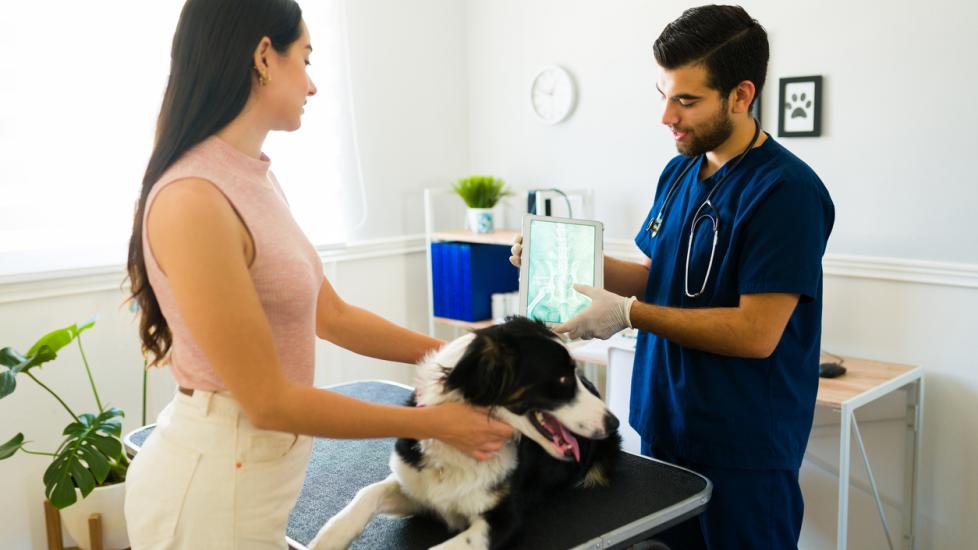Understanding Horner’s Syndrome in Canine Companions: Symptoms, Causes, and Management Tips for Dog Owners
Living with a furry friend is often filled with joy and companionship. However, like humans, dogs can experience various health conditions that require attentive care from their owners. One such condition is known as Horner’s syndrome, which can affect our canine companions. This article aims to provide pet parents with an understanding of what Horner’s syndrome is, its causes, symptoms, diagnosis process, treatment options, and how you can support your dog through this condition.
What Is Horner’s Syndrome?
Horner’s syndrome (also referred to as ‘ciliary paralysis’) is a neurological disorder characterized by the constriction of one pupil (miosis), drooping of the eyelid on the affected side (ptosis), and a temporary decrease or lack of sweating on the affected side of the face (anhidrosis). These changes are due to the disruption of the sympathetic nervous system, which controls functions we don’t consciously control, such as heart rate and blood pressure. While it can occur in any breed, it seems more common in brachycephalic breeds like Bulldogs and Pugs.
Causes of Horner’s Syndrome in Dogs
The exact cause of Horner’s syndrome varies greatly but may include trauma, tumors, infections, immune-mediated diseases, or congenital defects. In some cases, the syndrome resolves spontaneously without treatment. It’s important to note that while rare, Horner’s syndrome could be indicative of a serious underlying issue requiring immediate veterinary attention.
Symptoms of Horner’s Syndrome
The primary signs of Horner’s syndrome in dogs include:
1. Ptosis: The upper eyelid droops over the eye, making the eyeball appear partially covered.
2. Miosis: The pupil on the affected side becomes smaller than usual.
3. Anhidrosis: There’s decreased or absent sweat production on the affected side of the face, leading to dryness.
4. Eyelash Misdirection: Sometimes, lashes grow inward towards the eye instead of outwards, causing irritation (trichiasis).
5. Head Tilt: Some dogs develop a head tilt if there’s damage to the vestibular system.
6. Weakness: Weakness or loss of muscle strength on the affected side might also be observed.
Diagnosing Horner’s Syndrome
If your dog exhibits these symptoms, it’s crucial to consult with a veterinarian immediately. They will perform a thorough physical examination and likely recommend diagnostic tests to determine the cause of the condition. Blood work, imaging studies such as X-rays or CT scans, and possibly referral to a specialist for additional testing may be necessary.
Treatment Options for Horner’s Syndrome
Treatment depends on the underlying cause, but in many cases, supportive care is enough to manage the symptoms. Medications to dilate the pupil or topical lubricants to prevent corneal drying may be prescribed. If the cause is identified as something treatable, like an infection or tumor, appropriate therapy will be initiated. In some instances, surgery may be required to correct abnormalities caused by the syndrome.
How You Can Help Your Pet
As a responsible pet owner, here are some steps you can take to assist your dog during recovery:
1. Monitor Eye Health: Keep a close eye on the affected eye for redness, discharge, or other signs of discomfort.
2. Eye Care: Follow the vet’s instructions regarding cleaning and protecting the eye.
3. Environment Modifications: Ensure your home environment is safe, especially if your dog has difficulty opening his eyes fully.
4. Physical Therapy: If weakness is present, consider gentle exercises under veterinary guidance to maintain mobility.
5. Comfort Measures: Provide extra comfort by ensuring your dog has access to quiet, dimly lit spaces where he feels secure.
In conclusion, Horner’s syndrome in dogs requires prompt identification and management to ensure the well-being of our beloved pets. By recognizing the symptoms early and working closely with veterinary professionals, we can help our four-legged friends live happy and comfortable lives despite facing health challenges along the way.
